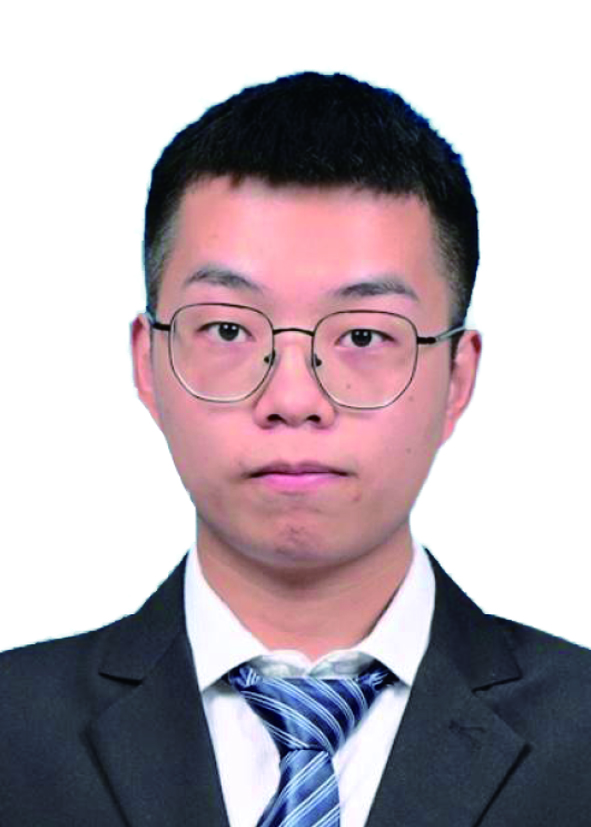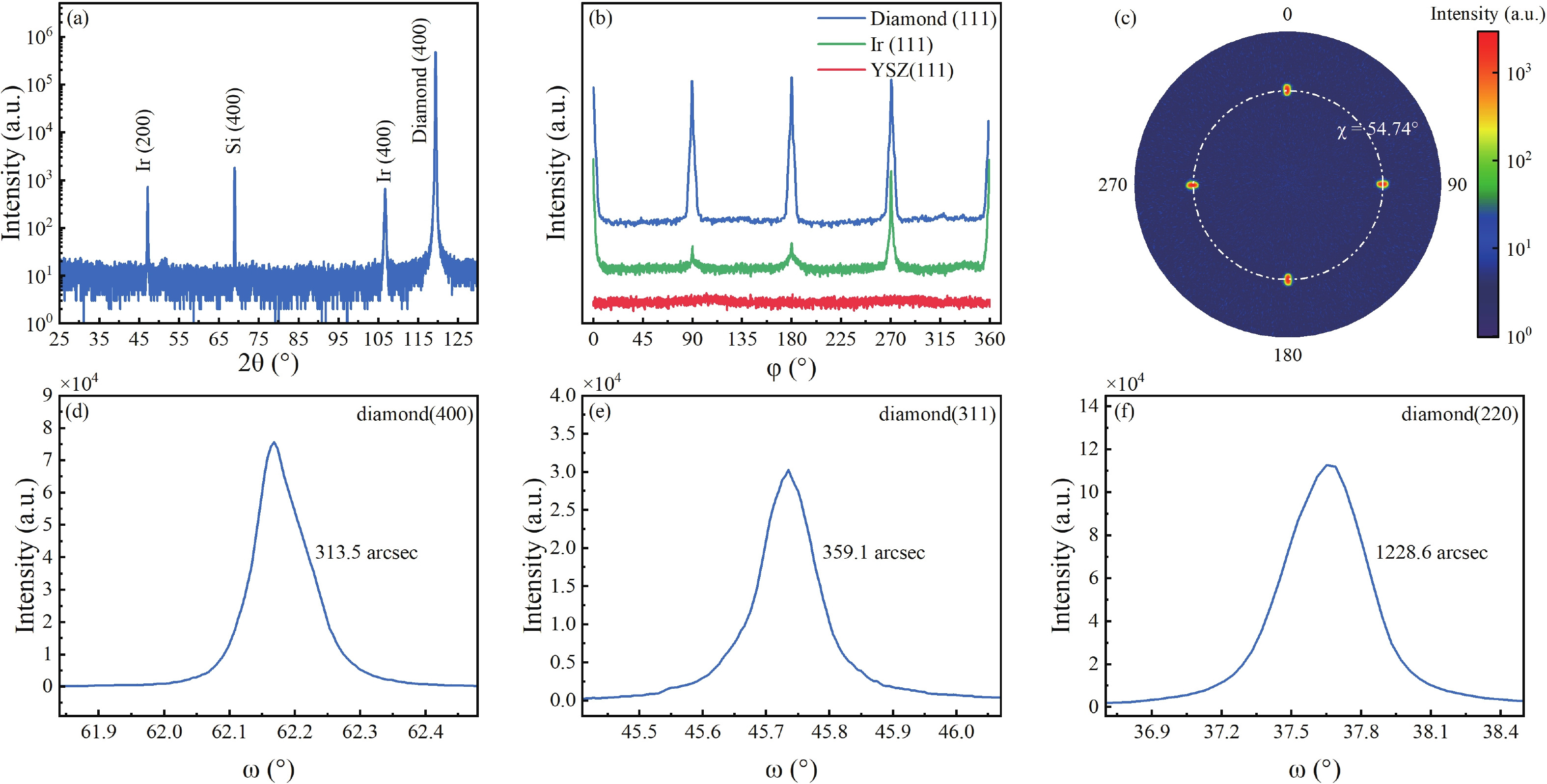| Citation: |
Pengfei Qu, Peng Jin, Guangdi Zhou, Zhen Wang, Zhanguo Wang. Growth of two-inch free-standing heteroepitaxial diamond on Ir/YSZ/Si (001) substrates via laser-patterned templates[J]. Journal of Semiconductors, 2024, 45(9): 090501. doi: 10.1088/1674-4926/24060003
****
P F Qu, P Jin, G D Zhou, Z Wang, and Z G Wang, Growth of two-inch free-standing heteroepitaxial diamond on Ir/YSZ/Si (001) substrates via laser-patterned templates[J]. J. Semicond., 2024, 45(9), 090501 doi: 10.1088/1674-4926/24060003
|
Growth of two-inch free-standing heteroepitaxial diamond on Ir/YSZ/Si (001) substrates via laser-patterned templates
DOI: 10.1088/1674-4926/24060003
More Information
-
References
[1] Wort C J H, Balmer R S. Diamond as an electronic material. Mater Today, 2008, 11, 22 doi: 10.1016/S1369-7021(07)70349-8[2] Isberg J, Hammersberg J, Johansson E, et al. High carrier mobility in single-crystal plasma-deposited diamond. Science, 2002, 297, 1670 doi: 10.1126/science.1074374[3] Inyushkin A V, Taldenkov A N, Ralchenko V G, et al. Thermal conductivity of high purity synthetic single crystal diamonds. Phys Rev B, 2018, 97, 144305 doi: 10.1103/PhysRevB.97.144305[4] Kwak T, Lee J, Choi U, et al. Diamond Schottky barrier diodes fabricated on sapphire-based freestanding heteroepitaxial diamond substrate. Diam Relat Mater, 2021, 114, 108335 doi: 10.1016/j.diamond.2021.108335[5] Feng M, Jin P, Meng X, et al. Performance of metal-semiconductor-metal structured diamond deep-ultraviolet photodetector with a large active area. J Phys D: Appl Phy, 2022, 55, 404005 doi: 10.1088/1361-6463/ac83ce[6] Salvadori M, Consoli F, Verona C, et al. Accurate spectra for high energy ions by advanced time-of-flight diamond-detector schemes in experiments with high energy and intensity lasers. Sci Rep, 2021, 11, 3071 doi: 10.1038/s41598-021-82655-w[7] Prawer S, Greentree A D. Diamond for quantum computing. Science, 2008, 320, 1601 doi: 10.1126/science.1158340[8] Schreck M, Asmussen J, Shikata S, et al. Large-area high-quality single crystal diamond. MRS Bull, 2014, 39, 504 doi: 10.1557/mrs.2014.96[9] Arnault J C, Lee K H, Delchevalrie J, et al. Epitaxial diamond on Ir/SrTiO3/Si (001): From sequential material characterizations to fabrication of lateral Schottky diodes. Diam Relat Mater, 2020, 105, 107768 doi: 10.1016/j.diamond.2020.107768[10] Tang Y H, Golding B. Stress engineering of high-quality single crystal diamond by heteroepitaxial lateral overgrowth. Appl Phys Lett, 2016, 108, 052101 doi: 10.1063/1.4941291[11] Kim S W, Kawamata Y, Takaya R, et al. Growth of high-quality one-inch free-standing heteroepitaxial (001) diamond on ( $ 11\bar{2}0 $) sapphire substrate. Appl Phys Lett, 2020, 117, 202102 doi: 10.1063/5.0024070[12] Kim S W, Takaya R, Hirano S, et al. Two-inch high-quality (001) diamond heteroepitaxial growth on sapphire ( $ 11\bar{2}0 $) misoriented substrate by step-flow mode. Appl Phys Express, 2021, 14, 115501 doi: 10.35848/1882-0786/ac28e7[13] Ichikawa K, Kurone K, Kodama H, et al. High crystalline quality heteroepitaxial diamond using grid-patterned nucleation and growth on Ir. Diam Relat Mater, 2019, 94, 92 doi: 10.1016/j.diamond.2019.01.027[14] Schreck M, Gsell S, Brescia R, et al. Ion bombardment induced buried lateral growth: the key mechanism for the synthesis of single crystal diamond wafers. Sci Rep, 2017, 7, 44462 doi: 10.1038/srep44462[15] Lebedev V, Kustermann J, Engels J, et al. Coalescence as a key process in wafer-scale diamond heteroepitaxy. J Appl Phys, 2024, 135, 145302 doi: 10.1063/5.0189631[16] Stehl C, Fischer M, Gsell S, et al. Efficiency of dislocation density reduction during heteroepitaxial growth of diamond for detector applications. Appl Phys Lett, 2013, 103, 151905 doi: 10.1063/1.4824330[17] Aida H, Ihara T, Oshima R, et al. Analysis of external surface and internal lattice curvatures of freestanding heteroepitaxial diamond grown on an Ir (001)/MgO (001) substrate. Diam Relat Mater, 2023, 136, 110026 doi: 10.1016/j.diamond.2023.110026[18] Kasu M, Takaya R, Kim S W. Growth of high-quality inch-diameter heteroepitaxial diamond layers on sapphire substrates in comparison to MgO substrates. Diam Relat Mater, 2022, 126, 109086 doi: 10.1016/j.diamond.2022.109086[19] Kimura Y, Ihara T, Ojima T, et al. Physical bending of heteroepitaxial diamond grown on an Ir/MgO substrate. Diam Relat Mater, 2023, 110055 doi: 10.1016/j.diamond.2023.110055[20] Qu P, Jin P, Zhou G, et al. Epitaxial growth of high-quality yttria-stabilized zirconia films with uniform thickness on silicon by the combination of PLD and RF sputtering. Surf Coat Technol, 2023, 456, 129267 doi: 10.1016/j.surfcoat.2023.129267[21] Zhou G, Qu P, Huo X, et al. The deposition of Ir/YSZ double-layer thin films on silicon by PLD and magnetron sputtering: Growth kinetics and the effects of oxygen. Results Phys, 2023, 47, 106357 doi: 10.1016/j.rinp.2023.106357 -
Proportional views





 Pengfei Qu got his Bachelor degree in 2019 from Jilin University. He is now a PhD student at Institute of Semiconductors, CAS under the supervision of Prof. Peng Jin. His current research focuses on the heteroepitaxial growth of monocrystalline diamonds.
Pengfei Qu got his Bachelor degree in 2019 from Jilin University. He is now a PhD student at Institute of Semiconductors, CAS under the supervision of Prof. Peng Jin. His current research focuses on the heteroepitaxial growth of monocrystalline diamonds. Peng Jin got his BS and PhD from Nankai University in 1996 and 2001, respectively. He did postdoctoral research at Institute of Semiconductors, CAS. In 2003, he joined Institute of Semiconductors, CAS as an associate professor. In 2009, he was promoted to be a professor. In 2015, he became a professor of UCAS. The current research focuses on semiconductor diamond materials and devices, low dimensional semiconductor materials and devices, scientific instruments, etc.
Peng Jin got his BS and PhD from Nankai University in 1996 and 2001, respectively. He did postdoctoral research at Institute of Semiconductors, CAS. In 2003, he joined Institute of Semiconductors, CAS as an associate professor. In 2009, he was promoted to be a professor. In 2015, he became a professor of UCAS. The current research focuses on semiconductor diamond materials and devices, low dimensional semiconductor materials and devices, scientific instruments, etc.
 DownLoad:
DownLoad:
















